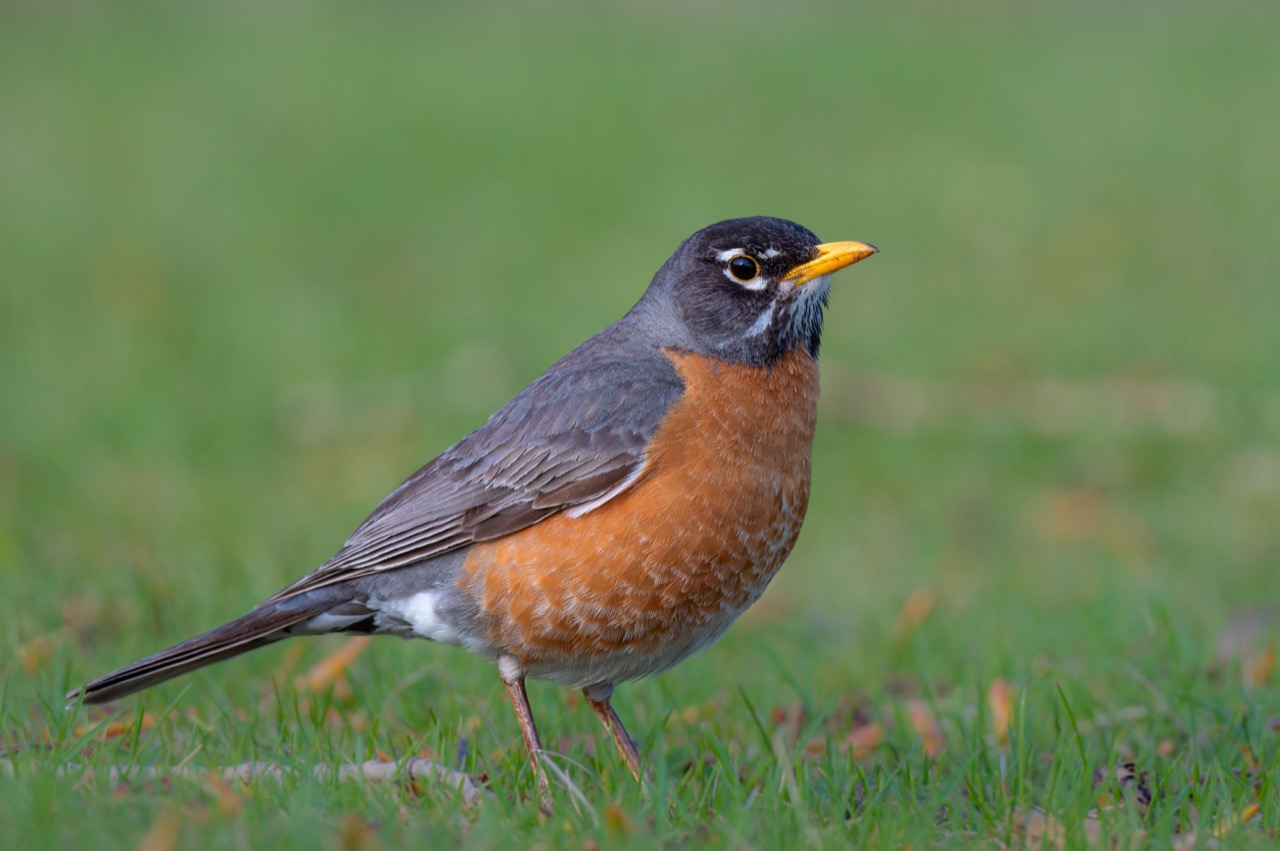The American Robin (Turdus migratorius) is one of the most familiar and beloved birds across North America. Known for its bright orange belly and melodious song, this bird not only signals the arrival of spring but also plays a crucial role in ecosystems and human culture. As a common sight in gardens, parks, and wild areas, understanding the life and habits of the American Robin can enhance our appreciation and support for these charismatic creatures.
Characteristics / Physical Description
The American Robin is easily recognizable by its round body, long legs, and rich red-orange underparts, contrasted with a dark gray to black upper side and head. Adult robins typically measure about 9 to 11 inches in length, with a wingspan that can reach up to 16 inches. Males and females look similar, though males tend to have brighter coloration. The robin’s song is a series of clear whistles, which are often heard during early morning and late evening.
Taxonomy and Classification
The American Robin is a member of the Thrush family (Turdidae), which includes other songbirds known for their melodious voices. It is closely related to other thrushes such as the Bluebird and the Nightingale. Despite its name suggesting a relationship with the European Robin, the American Robin is more closely related to other thrushes than to the Old World robins.
Behavior and Social Structure
American Robins are social birds, especially when not breeding. They can often be seen in flocks during migration or in their wintering grounds. While they are territorial during the breeding season, they become more communal when the breeding season ends. Their behavior varies from solitary in feeding to congregating in large groups during non-breeding seasons.
Habitat and Distribution
The American Robin is a versatile bird regarding habitat, thriving in wooded areas as well as urban environments like city parks and gardens. Its range extends throughout North America, from the tundra of northern Canada and Alaska down through Mexico. Due to its adaptability, it is one of the most widespread and commonly encountered birds in North America.
Diet and Feeding Habits
Robins are omnivorous, feeding primarily on a wide variety of invertebrates, including earthworms, insects, and snails, as well as fruit and berries. Their diet changes seasonally; they eat more animal prey during the breeding season to provide protein to their young, and switch to fruit in the autumn and winter.
Breeding and Reproduction
American Robins are prolific breeders, often producing three broods of 3-5 blue eggs each year. The female builds the cup-shaped nest, which is made of grass and mud, in a tree or on a building ledge. Both parents feed the chicks, although the female does most of the incubating. The young are ready to leave the nest about two weeks after hatching.
Relationship with Humans
The American Robin has a significant place in North American culture and folklore, often associated with cheerfulness and the arrival of spring. They are beneficial to gardens, as they consume large quantities of insect pests. However, they can sometimes be viewed as nuisances when they feed on fruit crops.
Evolutionary History
The American Robin has a wide range and has adapted to diverse environments across its range, indicating a high level of genetic flexibility and adaptability. Its ancestors likely diversified in North America several million years ago, with the current species emerging as forests spread across the continent.
Use as Research Animals
Due to their abundance and ease of observation, American Robins have been subjects in a variety of scientific studies, including research on bird migration, disease transmission, and the effects of urbanization on wildlife.
The American Robin is not just a common sight in backyards, but also an important part of the ecosystem and a beloved symbol of spring’s arrival. By understanding more about these birds, we can better appreciate their role in nature and our lives.

